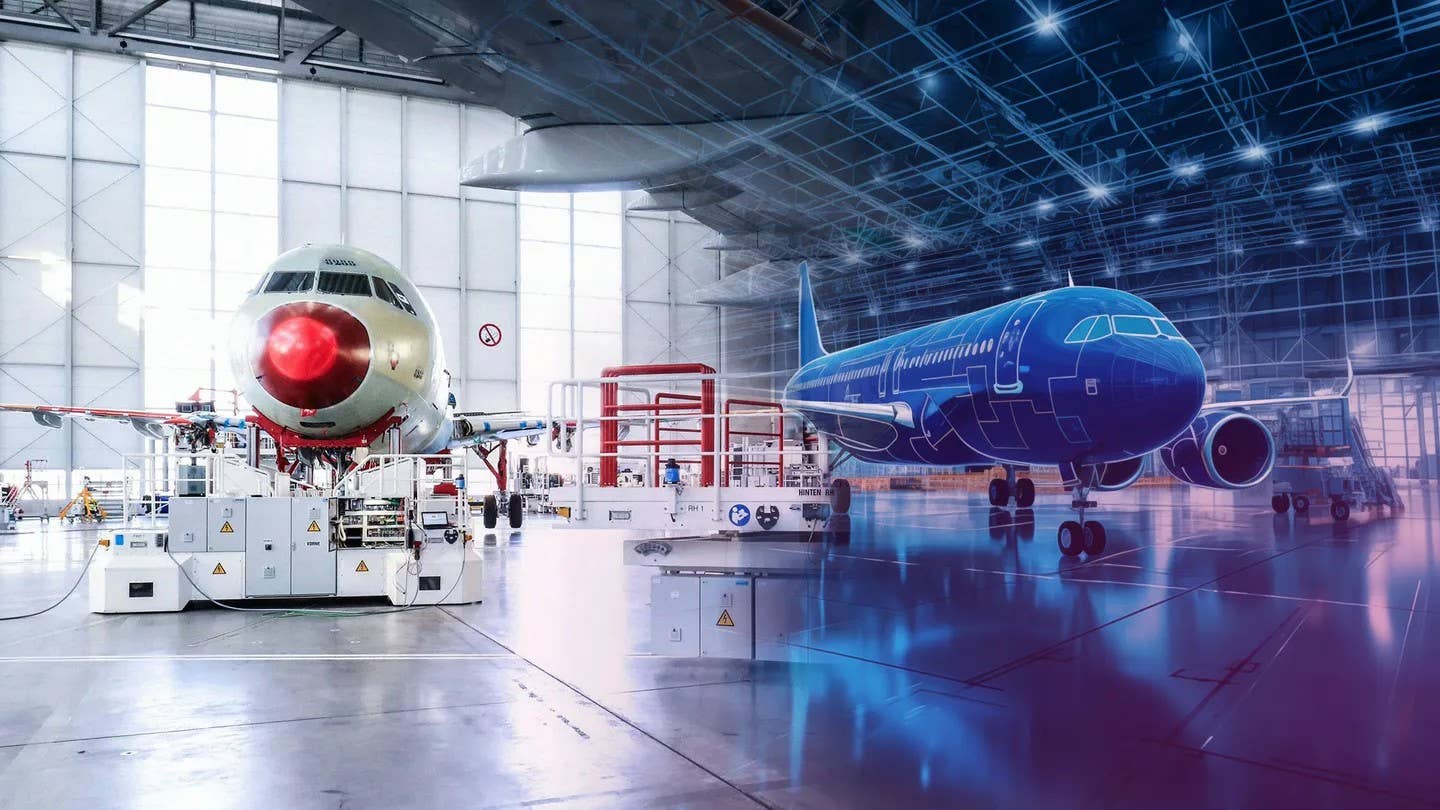Is Advanced Air Mobility’s Progress Being Thwarted?
Industry seeks to define America’s leadership role in an important aviation frontier.

About 200 movers and shakers in the advanced air mobility (AAM) industry gathered at Honeywell’s Capitol Hill office in Washington, D.C., with a message to Congress: You are standing between the country and progress.
The September event marked the aerospace and defense giant’s third annual AAM Summit, and according to David Shilliday, vice president and general manager of AAM at Honeywell, the event can have a tangible impact on U.S. policy.
If you're not already a subscriber, what are you waiting for? Subscribe today to get the issue as soon as it is released in either Print or Digital formats.
Subscribe Now“Our first two events, but especially last year’s in 2023, had a heightened focus on the then-pending FAA Reauthorization bill, and we believe the Summit helped educate and drive the priorities,” Shilliday said.
The industry is backed by billions of dollars of venture capital. But stakeholders fear that AAM technology has surpassed the pace of regulation.
The 2024 FAA Reauthorization Act, passed in May, was the first to make any mention of AAM. And according to Shilliday, Honeywell’s summits are one reason why.
He said that attendees at previous summits discussed requirements for the FAA, such as deadlines to issue a special federal aviation regulation (SFAR) on powered-lift pilot certification and a notice of proposed rulemaking (NPRM) on drone flights beyond the visual line of sight (BVLOS). Those provisions and more ultimately made it into the recent legislation.
Starting With the Good
Summit attendees, which included CEOs, industry thought leaders, and lawmakers, had plenty of criticisms for regulators. But they did cheer the inclusion of powered-lift SFAR and BVLOS NPRM deadlines in the Reauthorization Act.
- READ MORE: Here Comes That Hydrogen Power
That legislation also created an AAM Interagency Working Group, headed by the National Science and Technology Council, to coordinate work on AAM across federal agencies with the help of more than 100 subject matter experts. That effort, along with the Biden administration’s passage of the Inflation Reduction Act of 2022 and bipartisan infrastructure bill, was lauded as another key step.
Industry groups further praised the FAA’s drone delivery pilot program in Dallas, under which two companies have been authorized to manage their own airspace with FAA oversight, as a valuable step toward developing the drone NPRM.
Congressional staffers highlighted the agency’s clear communication and collaborative spirit. In short, AAM has plenty of powerful backers and is already taking flight in some parts of the country. But attendees aren’t satisfied—they expect the U.S. to lead the industry globally.
Slow Progress
Many guests made little effort to hide their qualms with regulators.
“Don’t let the perfect be the enemy of the good…Get the draft rule out, let the industry comment on it, and let the broader public comment on it,” said Michael Robbins, president and CEO of the Association for Uncrewed Vehicle Systems International (AUVSI), regarding the BVLOS NPRM.
The National Business Aviation Association’s (NBAA) Kristie Greco Johnson and General Aviation Manufacturers Association’s (GAMA) Amanda Joyner believe the powered-lift SFAR could provide a “practical pathway” for their members to get aircraft on the market. They similarly urged the FAA to publish initial rules now and refine them later.
“Giving the OEMs and operators some indication of what the regulatory landscape will be allows them to plan, which still leaves the U.S. behind some other geographies but moves the ball forward,” Shilliday said. “We’d encourage regulators to lean on the OEMs and public and private groups who have been thinking about needed rules for several years.”
Despite assurances from regulators and congressional staffers, attendees still worry the FAA is stretched too thin—a problem that could worsen as priorities shift during election season.
“We’ve seen resources in the FAA get yanked off these new programs, and they’re being put on existing, traditional programs experiencing difficulties. And that’s a challenge,” said Robert Rose, co-founder and CEO of automated flight developer Reliable Robotics. “I think our FAA has the tools and processes to do the job. But there’s just not enough of the FAA to go around.”
Taking the Lead
Summit guests hammered home the idea that in order for the U.S. to take leadership of the AAM industry, it needs to get moving. Ed Bolen, president and CEO of the NBAA, called AAM a “national imperative.”
“The U.S. cannot rest on our laurels believing we can glide and remain the world leader in aerospace,” said Shilliday. “It requires work.”
Robbins said the FAA needs to learn from its failure to assert the U.S. as the leader of the consumer drone industry, which is now dominated by China’s DJI.
The threat of China’s dominance was top of mind for attendees. Lisa Allman, co-founder and executive director of the Commercial Drone Alliance, believes American companies have the tools to compete, but they lack the opportunity. Without marked progress, venture capital will dry up.
Sergio Cecutta, who leads the AAM practice at SMG Consulting, contrasted the domestic AAM industry with China’s low-altitude economy. In his view, the Eastern superpower views the technology as both revenue generator and nation builder. Support for the industry—in the form of financing, regulatory support, and capital transfer—comes from all levels of the government, national to local.
Cecutta also pointed to progress in the United Arab Emirates, where the government has allocated land to vertiport developers to build electrified hubs. He predicted electric air taxis in the Middle East will take flight one to one-and-a-half years before the U.S. and Europe. In China, they are already flying.
Summit attendees hope for the U.S. to lead AAM manufacturing and help harmonize global regulations.
For example, a company designing an aircraft to American standards should be able to seamlessly launch in another country. There are other safety concerns also—such as if China set the standards for autonomous flight technology, some fear the U.S. could be vulnerable to cybersecurity risks.
Eyes on the Sky
In order to succeed, the American AAM industry will need to sway not just regulators, but the general public in much the same way on-demand rideshare platforms like Uber and Lyft became a popular option. AAM can also drive tourism, but as Christopher Coes, acting undersecretary of policy at the Department of Transportation pointed out, it won’t succeed if it only serves the rich.
Of course, that’s no guarantee the technology will instantly be adopted.
Hunter Presti, a staffer on the House Majority Transportation Committee, pushed back against the prevailing attitude a bit, arguing that regulators aren’t the only determinant of AAM’s success. Many other factors will include safety, demand, pricing, availability, and more.
This column first appeared in the November Issue 952 of the FLYING print edition.

Sign-up for newsletters & special offers!
Get the latest FLYING stories & special offers delivered directly to your inbox







